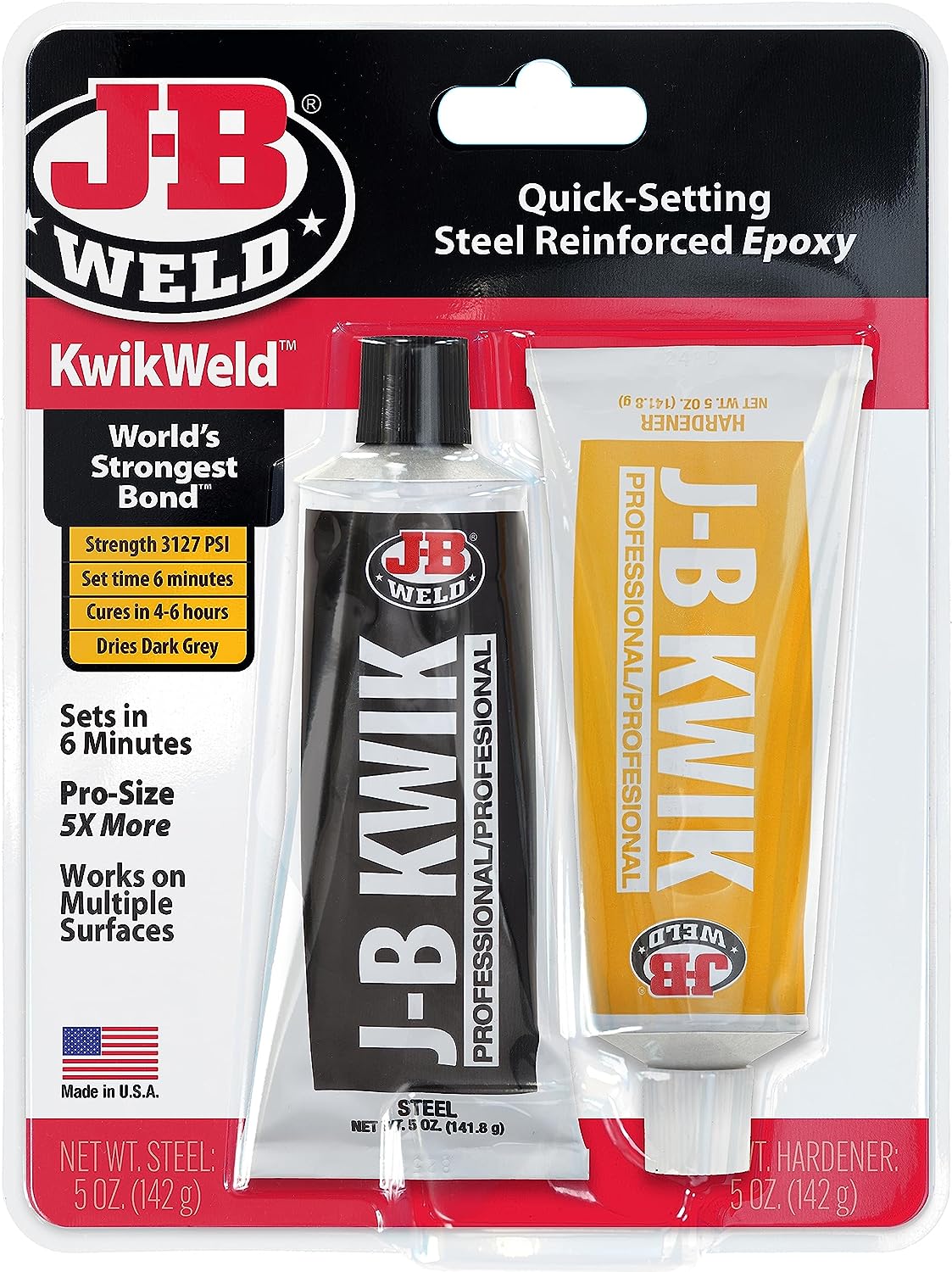Will JB Weld cure in cold temperatures? JB Weld, widely known for its robust bonding properties, can indeed cure cold temperatures; however, the process requires more time and specific conditions to be effective. JB Weld’s optimal curing temperature range is typically between 50 to 75 degrees Fahrenheit. Below these temperatures, JB Weld’s curing time is enhanced significantly. This also affects its overall strength. Here’s our guide to using JB Weld in cold temperatures. Get JB Weld.
The Curing Process
The curing process of JB Weld is a chemical reaction that transforms the liquid adhesive into a solid state, creating a powerful and permanent bond between surfaces. When the two components— the resin and the hardener—are mixed in the proper ratio, a thermosetting polymerization occurs.
As the mixture cures, it undergoes an exothermic reaction, releasing heat and gradually hardening. Under optimal conditions, this generally takes around 4 to 6 hours to set and about 15 to 24 hours to cure fully. During this time, keeping the bond undisturbed and stable is essential to ensure maximum adhesion and strength.
Cold Temperature Effects
In cold temperatures, the chemical processes within JB Weld slow down, altering the curing time and efficiency. Typically, JB Weld functions effectively within 50 to 75 degrees Fahrenheit. When the ambient temperature drops below this window, the chemical reaction—the thermosetting polymerization—progresses much slower.
This means that the exothermic reaction is less intense, leading to a protracted setting period extending well beyond the standard 4 to 6 hours, and complete curing may take longer than the usual 15 to 24 hours. It is essential to ensure that the bond remains undisturbed during this extended curing time to allow for proper adhesion once fully cured.
Tips for Cold Weather Application
You can do a few things on a cold weather surface before applying JB weld on it. I’ve outlined some of them below.

- Pre-warm the Surfaces: Before applying JB Weld, gently heat the surfaces to be bonded to help kickstart the curing process. You can do this with a heat gun or a hair dryer set on a low setting.
- Keep the Components Warm: Store the JB Weld resin and hardener at room temperature before use to maintain their fluidity and effectiveness.
- Insulate the Working Area: Use insulation materials such as foam or fiberglass to create a warmer microenvironment for the bond to cure if working outside.
- Employ a Heating Pad: Place a heating pad beneath the bonded area (if feasible) to provide a consistent heat source that will aid in maintaining the necessary temperature for curing.
- Extend the Curing Time: Anticipate longer curing times than usual and plan your project timeline accordingly, especially when the temperature is significantly below the optimal curing range.
- Avoid Direct Flame: While applying heat can be beneficial, avoid using direct flames as they can cause uneven heating and damage to both the JB Weld and the materials to which it is bonded.
- Test First: Test the JB Weld on a small, non-essential area or scrap material to ensure the cold weather application will succeed before applying it to the final project.
- Follow Manufacturer’s Instructions: Always refer to the manufacturer’s instructions regarding cold weather use, as they may provide specific guidance or temperature limits for their product.
Conclusion
In summary, while cold temperatures may present challenges for using JB Weld, you can mitigate the challenges with careful preparation and application techniques. By pre-warming surfaces, keeping components at room temperature, insulating the workspace, using a heating pad, and allowing for extended curing times, it is possible to achieve a strong, durable bond even in less-than-ideal conditions. Avoid direct flames, conduct preliminary tests, and adhere to the manufacturer’s cold weather instructions. With these strategic approaches, your winter projects can proceed without compromise, ensuring the integrity and longevity of your bonds regardless of the chilly weather.


Add comment